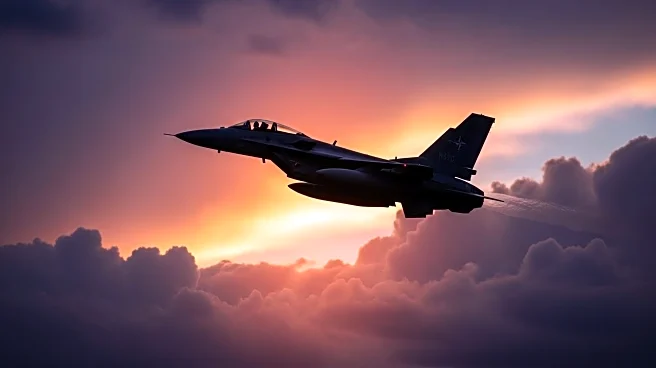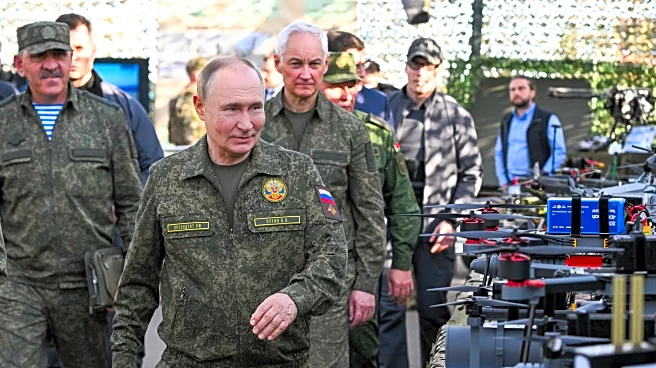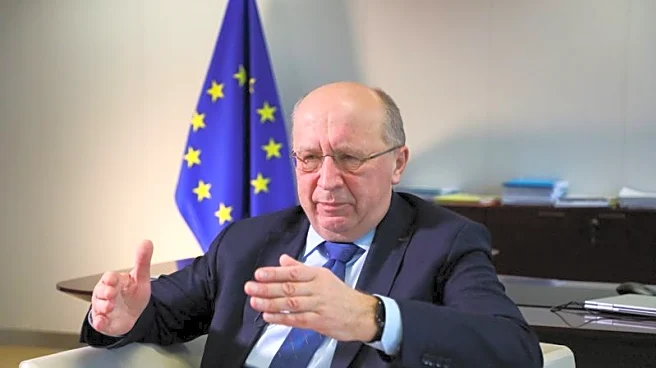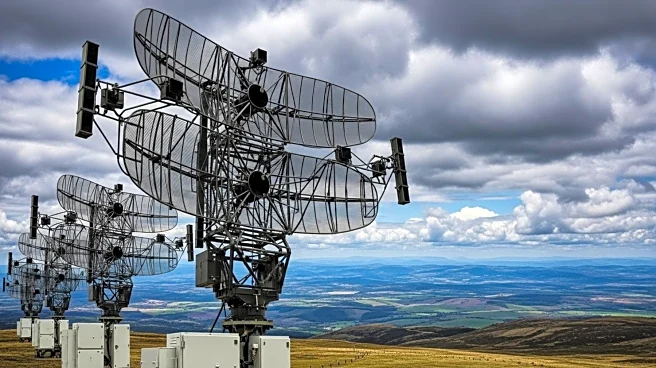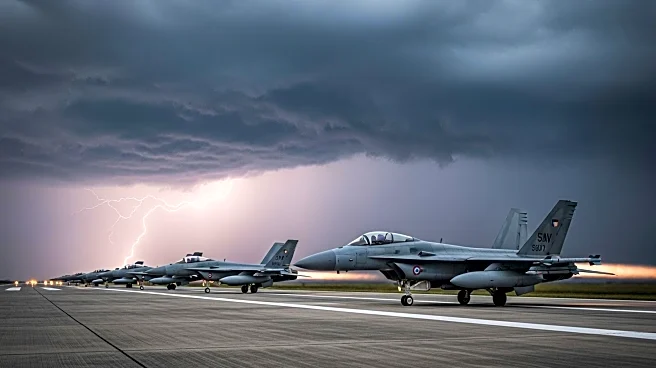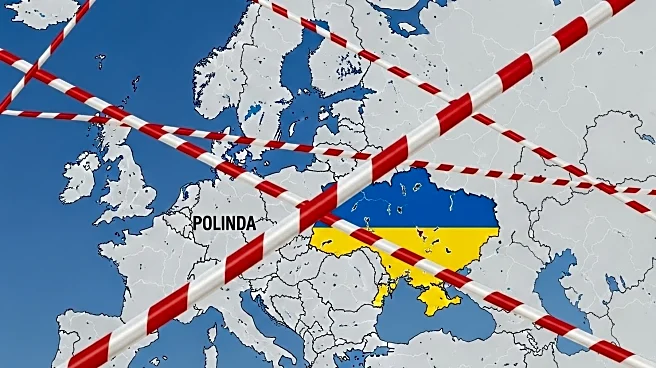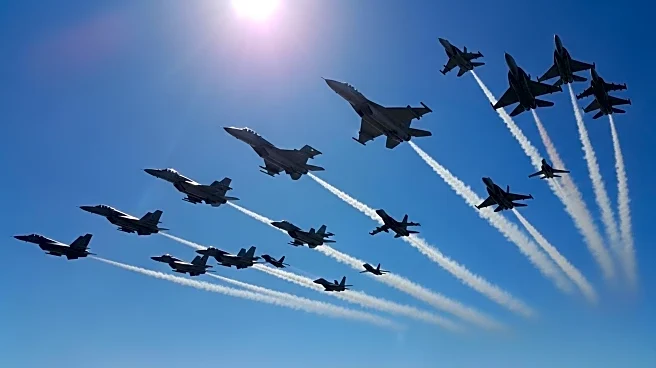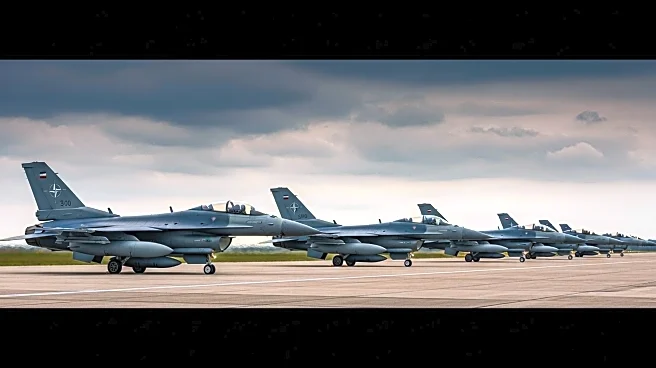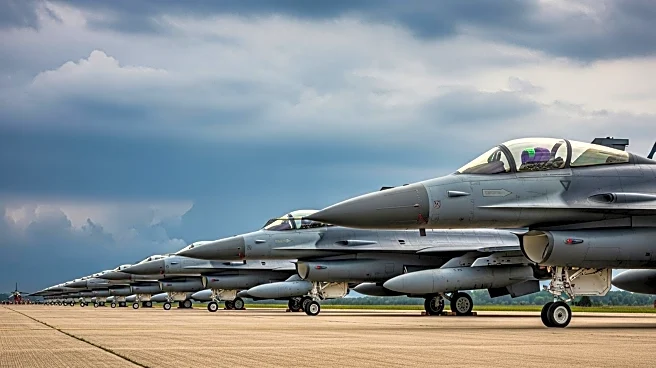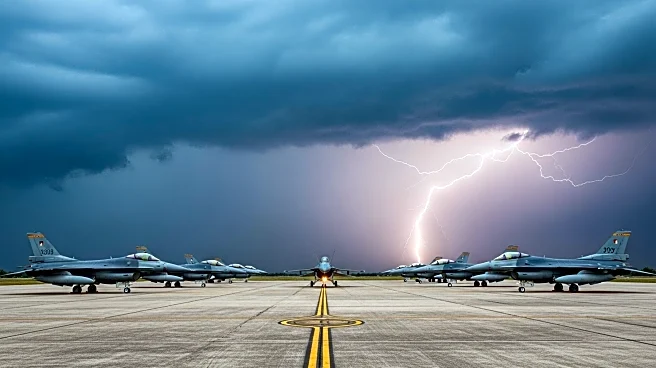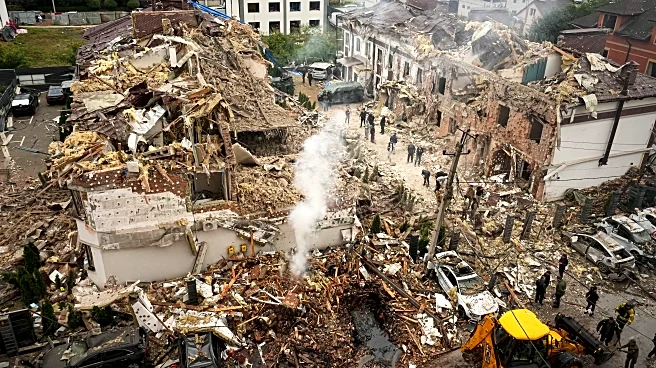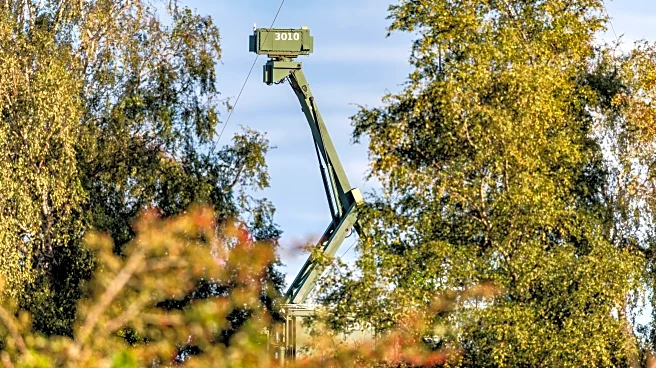What is the story about?
What's Happening?
On Sunday, Russia launched a significant aerial assault on Ukraine, deploying nearly 600 drones and 48 missiles over a 12-hour period. The attack, which primarily targeted the capital city of Kyiv, resulted in at least four fatalities and numerous injuries. In response, NATO scrambled fighter jets and placed air defense units on high alert, particularly in Poland, to secure the alliance's eastern flank. The incident has raised concerns about the effectiveness of current air defense systems and the potential for wider regional instability. The attack is one of the largest since the onset of the war, highlighting escalating tensions between NATO member states and Russia.
Why It's Important?
The scale and intensity of the Russian assault underscore the growing threat to NATO member states and the potential for regional instability. The proximity of the attack to NATO borders has heightened concerns about the alliance's security and the effectiveness of its air defense systems. The incident follows recent NATO air defense operations triggered by drone incursions and unexplained drone activity over Scandinavia, further straining relations between NATO allies and Moscow. The deployment of fighter jets and temporary airspace restrictions are becoming more frequent as NATO nations report increased airspace violations, indicating a need for enhanced regional security measures.
What's Next?
NATO may increase air patrols, conduct training exercises, or reposition assets to demonstrate readiness and deter further provocations. The alliance's response to the attack will likely involve a reassessment of its air defense capabilities and strategies to address the growing threat posed by Russian military actions. The situation remains tense, with potential implications for NATO's future security posture and its relations with Russia.
AI Generated Content
Do you find this article useful?
